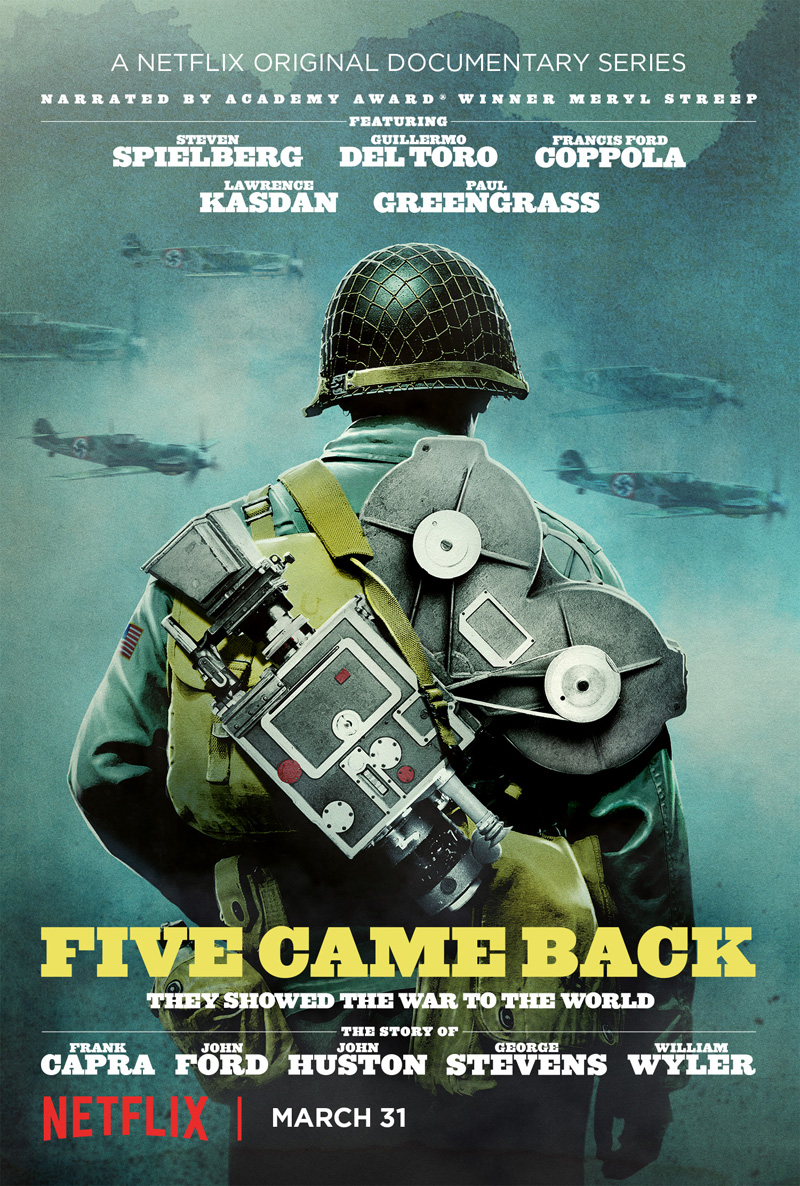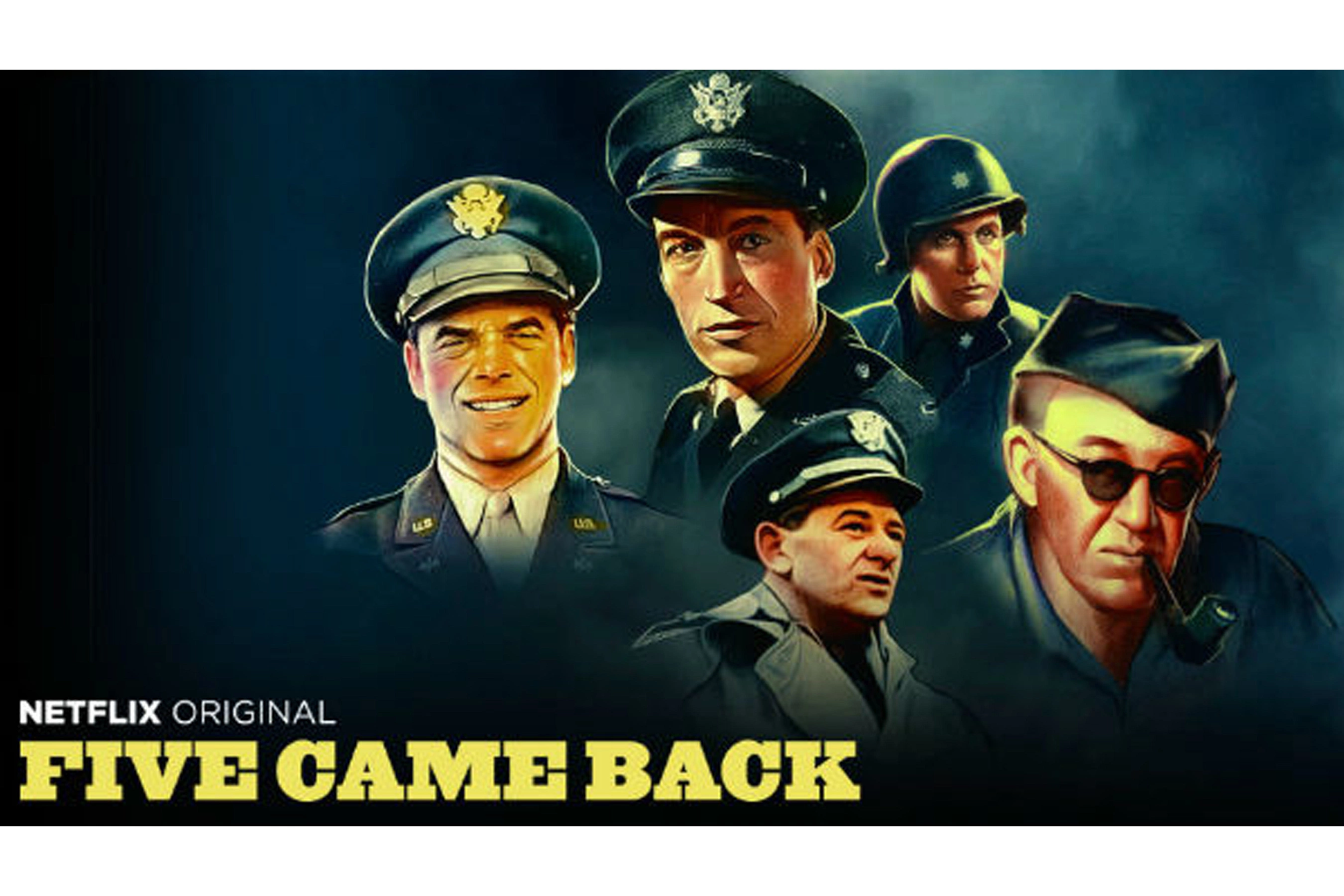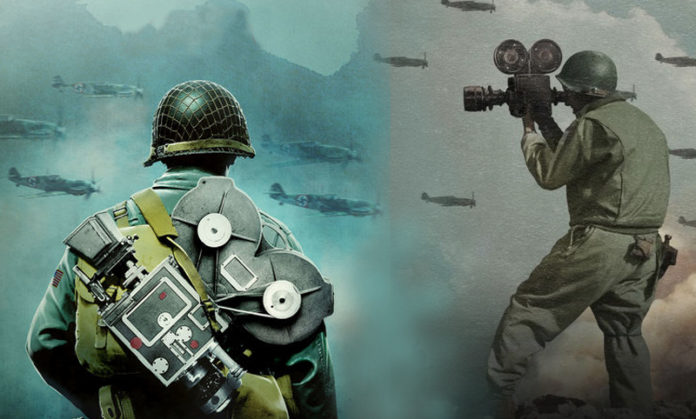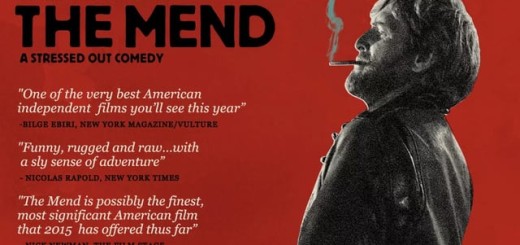FIVE CAME BACK Review

Director: Laurent Bouzereau
Genre: Documentary
Year: 2017
Very rarely will I watch a feature-length documentary; years prior I had always gravitated toward the fictional worlds constructed by the cinema—worlds wherein escape supplanted reiteration and documentation and “truth.” Over winter break I watched the 2015 HBO documentary HITCHCOCK/TRUFFAUT based on Francois Truffaut’s 1966 book CINEMA ACCORDING TO HITCHCOCK. And prior to that foregoing, I had seen only KURT COBAIN: MONTAGE OF HECK—another 2015 HBO documentary. (Of course in bucolic youth I dabbled in the “documentaries” featured on various T.V. channels: History Channel, Discovery, Animal Planet, etc.; and perhaps my memory fails in recollecting feature-length documentaries beheld pre-high school.) But today—today was different. Today I witnessed Netflix’s three-part documentary, FIVE CAME BACK (based upon Mark Harris’s book of the same name), a poignant and unflinching WWII epic—narrated by Meryl Streep—whereby its director, Laurent Bouzereau, and writer, Harris, pay stirring homage to five Hollywood directors who joined the U.S. military, nobly eschewing their illustrious careers to make the ultimate sacrifice on an altar for freedom: Frank Capra, John Ford, John Huston, George Stevens, and William Wyler.
The documentary—segmented into three episodes: “The Mission Begins,” “Combat Zones,” and “The Price of Victory”—also features five contemporary directors—Steven Spielberg, Francis Ford Coppola, Guillermo del Toro, Paul Greengrass, and Lawrence Kasdan—who speak reverently on behalf of the five auteurs-turned-soldier-documentarians throughout the three foregoing sections. Episode one chronicles Capra’s, Ford’s, Huston’s, Stevens’s, and Wyler’s early Hollywood careers, the rise of Nazi Germany, the proliferation of isolationist sentiments amongst Hollywood financiers, the Japanese attacks on Pearl Harbor, and the United States’ declaration of war in 1941. Episode two takes us abroad to western Europe and the Pacific theater, from London to the Aleutian Islands, tracing the directors’ voyages in lands—“Combat Zones”— unprecedentedly different from their wealthy-but-feckless, palm-silhouetted city; featured prominently in this second act is their dealing with military bureaucracy, whose necessary hierarchal structure made it difficult for our auteurs to promulgate the documentary films they (the auteurs) found fit for U.S. audiences. The final episode captures the waning months of WWII in both theaters and the waning years of Capra’s, Ford’s, Huston’s, Stevens’s, Wyler’s Hollywood careers post-war, their everlasting scars from having witnessed horror on a grand stage.

A Porno: Starring Frank Capra, John Ford, John Huston, George Stevens, and William Wyler
Director Laurent Bouzereau meticulously crafts a full-fledged micro-history of Hollywood’s involvement in WWII and the war itself: the man (et al.) takes over 100 hours of archival footage and cuts it down to a snappy, scintillating narrative—informative, harrowing, tear-inducing. Footage featured: a great deal from the documentaries made by our primary subjects, including THE BATTLE OF SAN PIETRO and LET THERE BE LIGHT (dir. Huston), WHY WE FIGHT (dir. Capra), MEMPHIS BELLE: A STORY OF A FLYING FORTRESS (dir. Wyler), sequences from Capra’s MR. SMITH GOES TO WASHINGTON and IT’S A WONDERFUL LIFE, Wyler’s MRS. MINIVER, Ford’s THE SEARCHERS, Stevens’s WOMAN OF THE YEAR, newsreels from the decade, and TRIUMPH OF THE WILL (dir. Riefenstahl). Bouzereau’s decision to include the five talking-heads in Spielberg, Coppola, del Toro, Greengrass, and Kasdan proves to be vital, for without the link between past and present, the poignancy and urgency of his narrative would of course be lost: there is something about contemporaries exhibiting humble respect for pioneers of old that heightens an emotional, and intellectual, response.
Toward the middle and latter half of the second episode the scintillating narrative dials down to a mere simmer: I don’t believe this stupor vitiates the filmmaker’s craft. Rather, I think it has to do with the subject matter at hand in the second episode—dry unpalatable statecraft, necessary exposition, heavy-lifting which underpins the stupendously dramatic third episode: none of which can be avoided. Suffice it to say, Harris and Bouzereau stamp down their storytelling abilities in the final act—a supremely efficacious conclusion to a narrative germane to our current political state. The archival footage of Nazi Germany’s liberation, in particular the liberation of Jews from death camps, becomes harrowing, unalloyed horror—no public reticence will contain the tears, I assure you (I watched the film in a cubicle in the library . . . and I got some worrisome looks). Immediately juxtaposed with the dreadful liberation footage, stirring montages of newsreels—American veterans returning home to loved ones, jubilant Parisian citizens dancing about in the streets—, sequences from inspiring Academy Award and AFI speeches, and IT’S A WONDERFUL LIFE, conclude the third episode: Bouzereau could not make his message more conspicuous (if it were a dog it would bite you in the leg)—rectitude will always, always triumph over evil.

Make films, not war
Netflix’s FIVE CAME BACK enters the American foray in a period desperate for sentimental, optimistic, and unifying art. Let us eschew hip cynicism and deluded irreverence for the time being; let us eschew polarizing political inclinations for the same. Bouzereau and Harris’s documentary valiantly collocates Hollywood and the U.S. military, two entities whom have been nakedly labeled as adversaries by liberals and conservatives alike; respect is paid to those who have served our military, and continue to do so, and to those who have served the arts, and continue to do so. Ad lucem.
Verdict: Recommend



